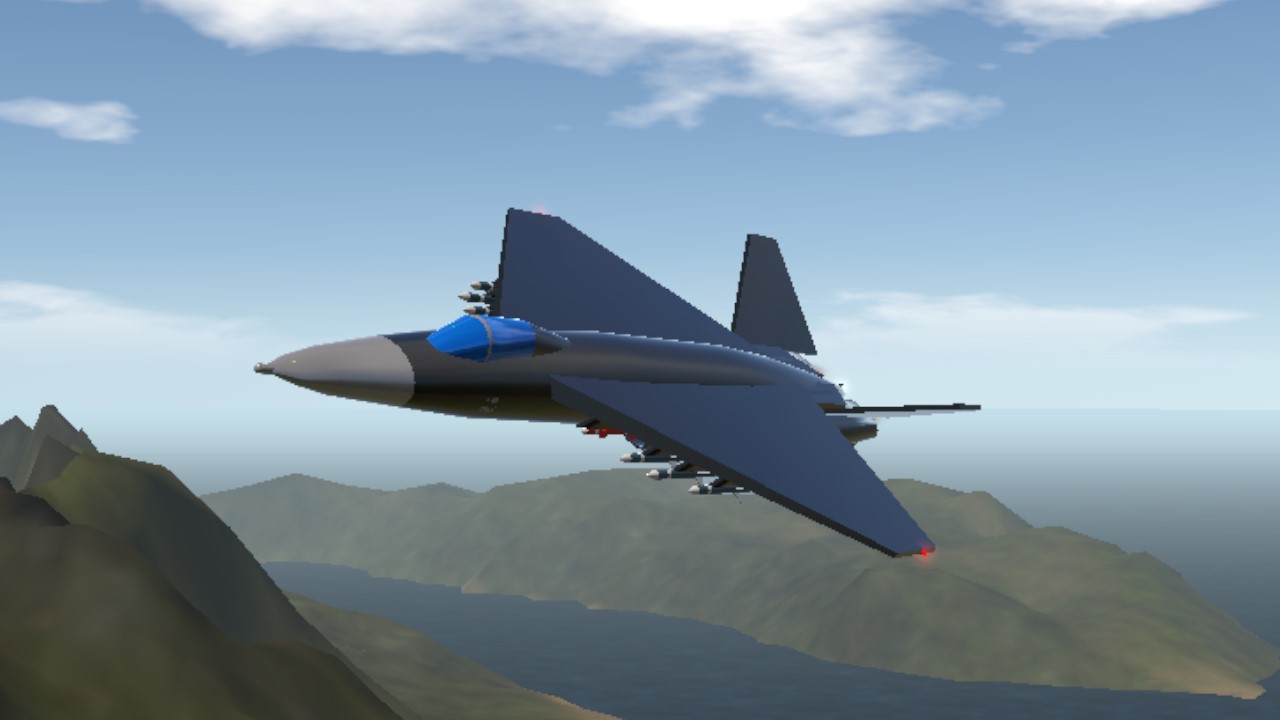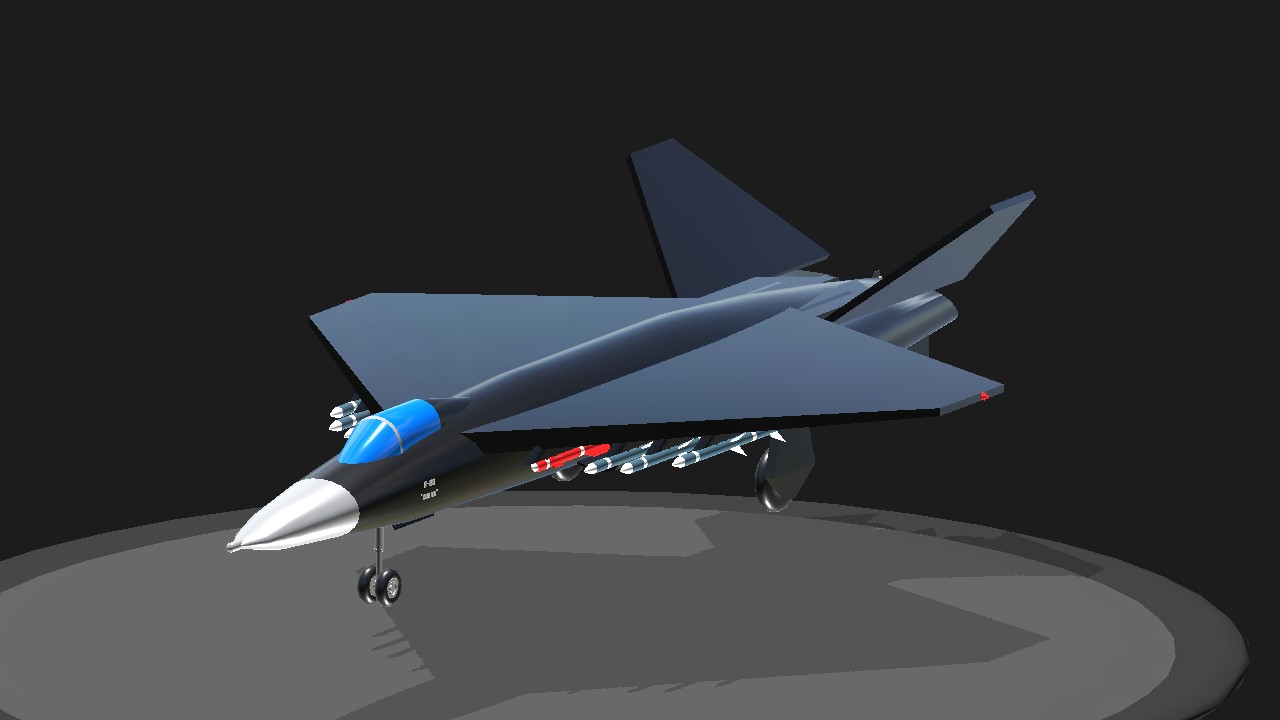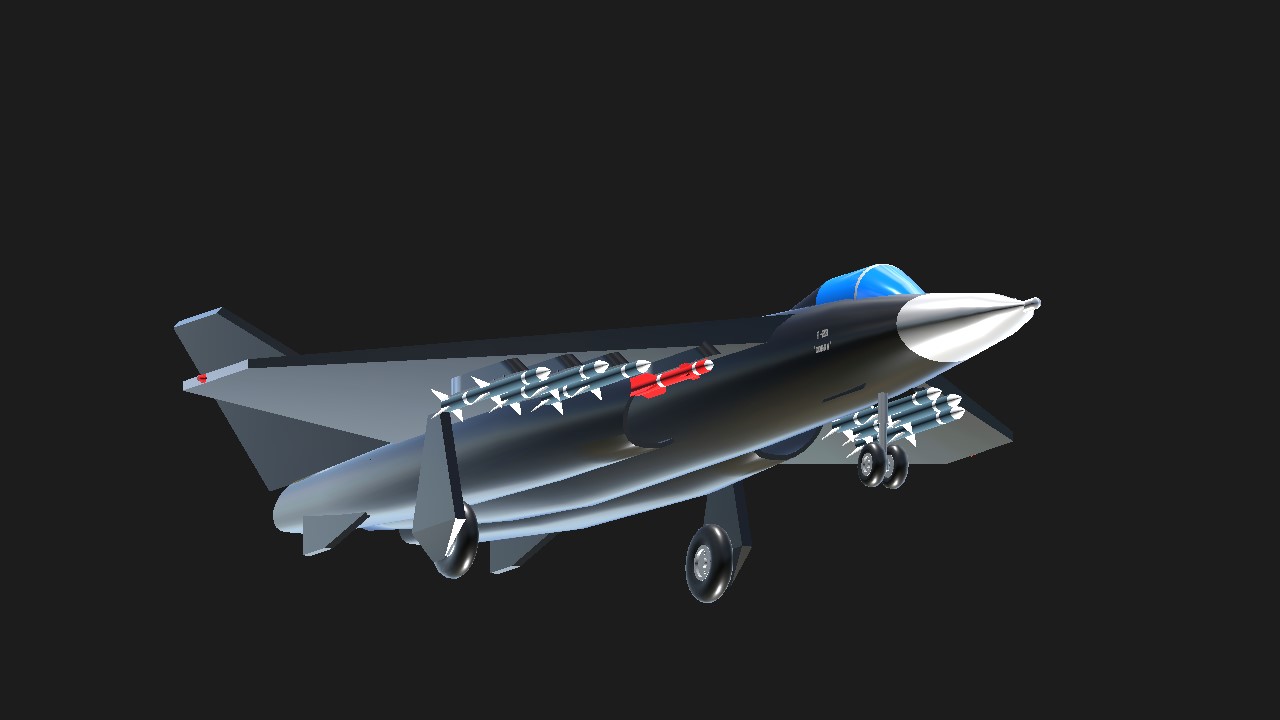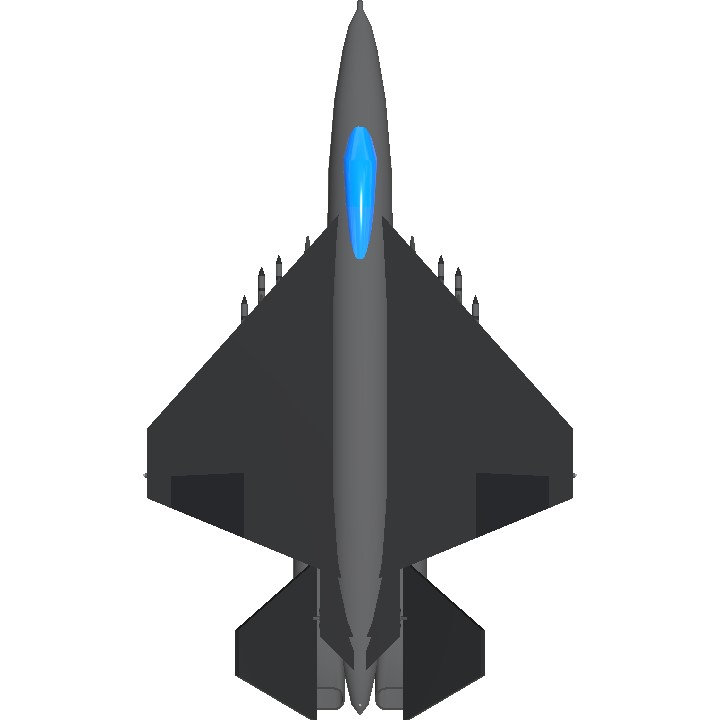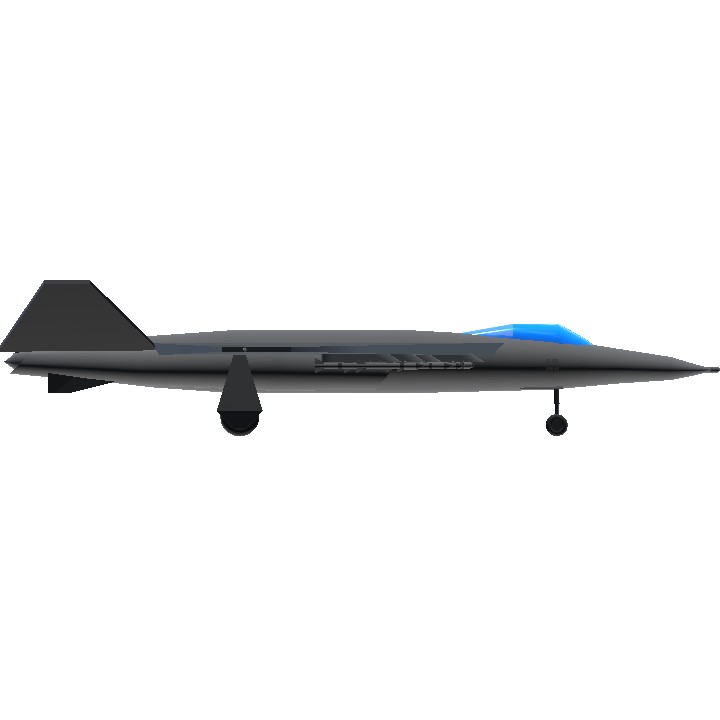A YF-23 but with PSM capabilities!
The Northrop/McDonnell Douglas YF-23 is an American single-seat, twin-engine, stealth fighter technology demonstrator prototype designed for the United States Air Force (USAF). The design team, with Northrop as the prime contractor, was a finalist in the USAF's Advanced Tactical Fighter (ATF) demonstration/validation competition, battling the YF-22 team for full-scale development and production. Two YF-23 prototypes were built.
In the 1980s, the USAF began looking for a replacement for its F-15 fighter aircraft to more effectively counter emerging threats such as the Soviet Union's advanced Sukhoi Su-27 and Mikoyan MiG-29. Several companies submitted design proposals; the USAF selected proposals from Northrop and Lockheed for demonstration/validation. Northrop teamed up with McDonnell Douglas to develop the YF-23, while Lockheed, Boeing, and General Dynamics developed the YF-22. The YF-23 was stealthier and faster, but less agile than its competitor. After a four-year development and evaluation process, the YF-22 team was announced as the winner in 1991 and developed the F-22 Raptor, which first flew in 1997 and entered service in 2005. The U.S. Navy considered using a naval version of the ATF as a replacement for the F-14, but these plans were later canceled due to costs.
After flight testing, both YF-23s were placed in storage while various agencies considered plans to use them for further research, although none proceeded. In 2004, Northrop Grumman[N 1] used the second YF-23 as a display model for its proposed regional bomber aircraft, but this project was dropped because longer range bombers were required. The two YF-23 prototypes are currently exhibits at the National Museum of the United States Air Force and the Western Museum of Flight respectively.

DEVELOPMENT
American reconnaissance satellites first spotted the advanced Soviet Su-27 and MiG-29 fighter prototypes between 1977 and 1979, which caused concern in the U.S. Both Soviet models were expected to reduce the combat and maneuverability advantages of contemporary U.S. fighter aircraft, including the newly introduced F-15 Eagle and F-16 Fighting Falcon.[1] Additionally, U.S. tactical airpower would be further threatened by new Soviet systems such as the A-50 airborne warning and control system (AWACS) revealed in 1978 and more advanced surface-to-air missile systems.[2] In 1981, the USAF began developing requirements and discussing with the aerospace industry on concepts for an Advanced Tactical Fighter (ATF) with both air-to-air and air-to-ground missions in consideration. The ATF was to take advantage of emerging technologies, including composite materials, lightweight alloys, advanced flight-control systems, more powerful propulsion systems, and stealth technology.
The USAF released the ATF request for information (RFI) in May 1981 to several aerospace companies on possible features for the new fighter. Eventually code-named "Senior Sky", the ATF at this time was still in the midst of requirements definition, which meant that there was considerable variety in the industry responses. Northrop submitted three designs for the RFI, ranging from ultra low-cost, to highly agile, to low-observable missileer; all were on the small and light end of the response spectrum.[4] In 1983, the ATF System Program Office (SPO) was formed at Wright-Patterson Air Force Base from the initial Concept Development Team. After discussions with aerospace companies and Tactical Air Command (TAC), the CDT/SPO made air-to-air combat the primary role for the ATF, which would replace the F-15 and emphasize outstanding kinematic performance with supersonic cruise and maneuver.[5] Northrop's response was a Mach 2+ fighter design designated N-360 with delta wings, a single vertical tail, and twin engines with thrust vectoring nozzles and thrust reversers.[6][7] Around this time, however, the SPO would begin to increasingly emphasize stealth for survivability and combat effectiveness due to very low radar cross section (RCS) results from the Air Force's "black world" innovations such as the Have Blue/F-117 ("Senior Trend"), Tacit Blue, and the Advanced Technology Bomber (ATB) program (which would result in the B-2, or "Senior Ice").[8]
Northrop was able to quickly adapt to the ATF's increasing emphasis on stealth. Since October 1981, a small team of engineers under Rob Sandusky within its ATB/B-2 division had been working on stealth fighter designs. Sandusky would later be the Northrop ATF's Chief Engineer, while fellow B-2 stealth engineer Yu Ping Liu was recruited in 1985 as the chief scientist.[9] Three design concepts were studied: the Agile Maneuverable Fighter (AMF) similar to N-360 with two canted vertical tails and the best aerodynamic performance of the three while having minimal stealth, Ultra Stealth Fighter (USF) that emphasized maximum stealth through edge alignment with only four RCS lobes and nicknamed "Christmas Tree" for its planform shape, and High Stealth Fighter (HSF) that balanced stealth and maneuverability with diamond wings, all-moving V-tail "ruddervators" (or butterfly tails), engine exhaust troughs, and aligned edges.[7][10] HSF would take many design cues from the B-2 to reduce its susceptibility to radar and infrared detection, and Liu's understanding of both radar signatures and aerodynamics would lend itself to key design features, such as the shaping of the nose (nicknamed the "platypus" for the initial shape and pronounced chine edges) and canopy with their Gaussian surfaces. By 1985, HSF had evolved to be recognizably similar to the eventual YF-23 and emerged as the optimal balance of stealth and aerodynamic performance

Specifications
General Characteristics
- Created On Android
- Wingspan 30.8ft (9.4m)
- Length 51.3ft (15.6m)
- Height 10.9ft (3.3m)
- Empty Weight 17,942lbs (8,138kg)
- Loaded Weight 28,843lbs (13,083kg)
Performance
- Power/Weight Ratio 1.558
- Wing Loading 39.8lbs/ft2 (194.2kg/m2)
- Wing Area 725.2ft2 (67.4m2)
- Drag Points 4007
Parts
- Number of Parts 91
- Control Surfaces 5
- Performance Cost 534

